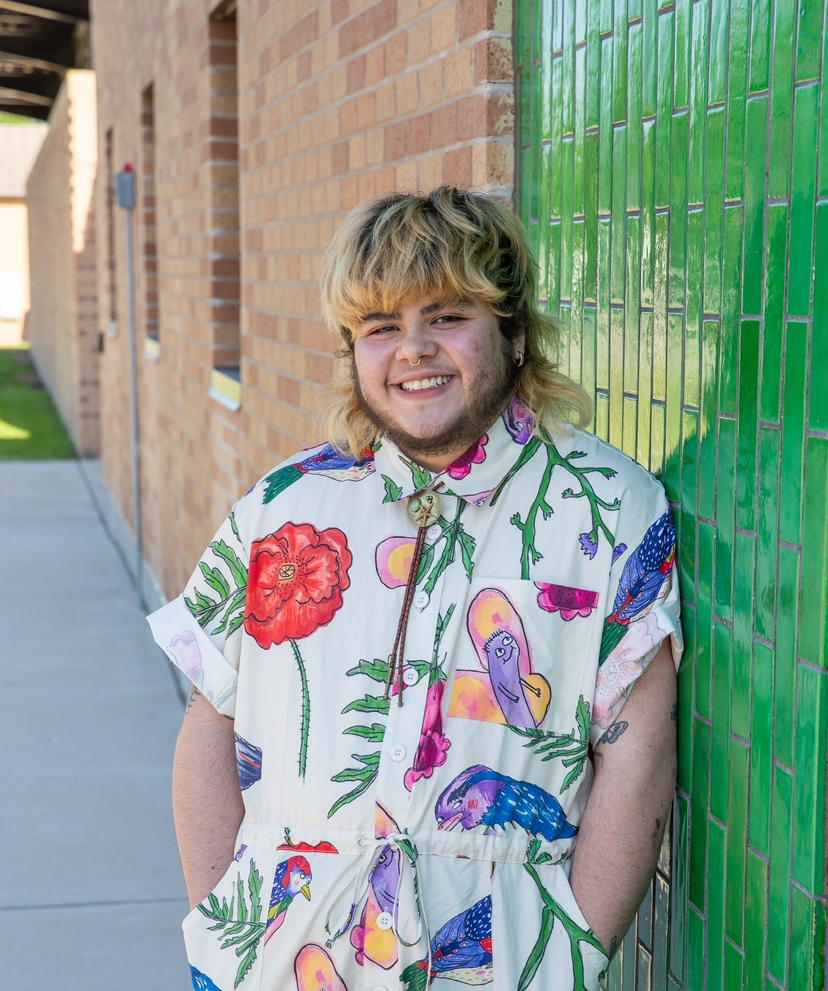
2024, 80 x 90 x 25", Media: Stoneware, Firing Process: Mid-range, Reduction, Surface: Unglazed
Annual Cull acts as a physical tally of transgender lives lost due to hate crimes and violence in 2023 and 2024. Thirty-five vessels are hung on the wall to represent the number of murders in 2023, but ten are missing, alluding to the murders that have taken place this year. The floor is scattered with an unknown amount of broken vessels in various states of ceramic maturity. They reflect the trans lives lost that were not reported and those lost to suicide. The vessels themselves are modeled after my medically transitioned body, in doing so, I have put my own fear -and that of many trans people- in the forefront. Some vessels are “tattooed” with creatures associated with vermin. These beings are often exterminated, stepped on, and seen as others; an unfortunate connection to the way society treats trans people. Their stigma is forever carved into these vessels, yet they wear them proudly. They are adorned with trapped carbon due to their reduction firing, an embodiment of time and physical change. The title serves as a reminder of the hunt put on trans people by heinous politicians, anti-trans laws, and rhetoric. By forcing the viewer to step on the remains of the broken vessels, they must come to terms with their own complacency in the attack on trans people in the U.S.
Artist Statement
Transitioning is allowing yourself to have a part in your own creation. As a trans ceramicist, I cannot help but notice the parallels of clay to ceramic and my current medical transition. My work uses the ceramic vessel to represent my body as I alter and personify it to match my interpretation of my inner self. After my top surgery, I used my pre and post-op chest to begin this exploration of self through vessels. I expand this into queer aesthetics, fashion, and mixed media. Self-expression and gender identity have always been on a spectrum in my eyes, and the vessels mirror that. Vases are wheel thrown and manipulated into a torso shape, then the piece is adorned with clothes, tattoos or patches. The vessels that resemble people are painted with underglaze and oxides in a more illustrative approach to replicate a physical representation of queerness and how we use fashion as a signal to show personal identity. My use of mixed media is new to my work, but is an homage to my textile ancestry and love for accessorizing. The choice of materials felt intuitive at first, but now I understand I am using textiles, wire, and ceramic to act as a trinity of my matriarchal lineage of my grandmother, mother, and myself. My grandmother, a seamstress, and mother, a jeweler, have had a great effect on who I am as a ceramicist, and how I represent myself and craft. Combining wire and textile patches into my ceramic work allows me to acknowledge the women before me and their skills in a way that is true to me and my identity.
Bio
Sam Sequeira is a ceramics artist from Houston, Texas. They graduated with a BFA in Studio Art with a concentration in Ceramics as well as an Art History Minor from the University of North Texas. They started working with clay in 2018, and have since exhibited locally and nationally, assisted local artists, and taught workshops. They are currently working and teaching as an Artist in Residence at KC Clay Guild, in Kansas City, Missouri. Sam’s work focuses on self expression as a queer and trans person. Through vessels and surface ornamentation, they narrate how the queer community often marks their own path in life as well as clothing through flagging and alterations. They often reference textiles and DIY elements like patches and cropped clothing. Their work aims to bring insight into their own battles and challenges as a trans person, and the relationship between queer people and clothing. They hope to bring relatability and reassurance to members of their community and a sense of humanity to those outside of it.










